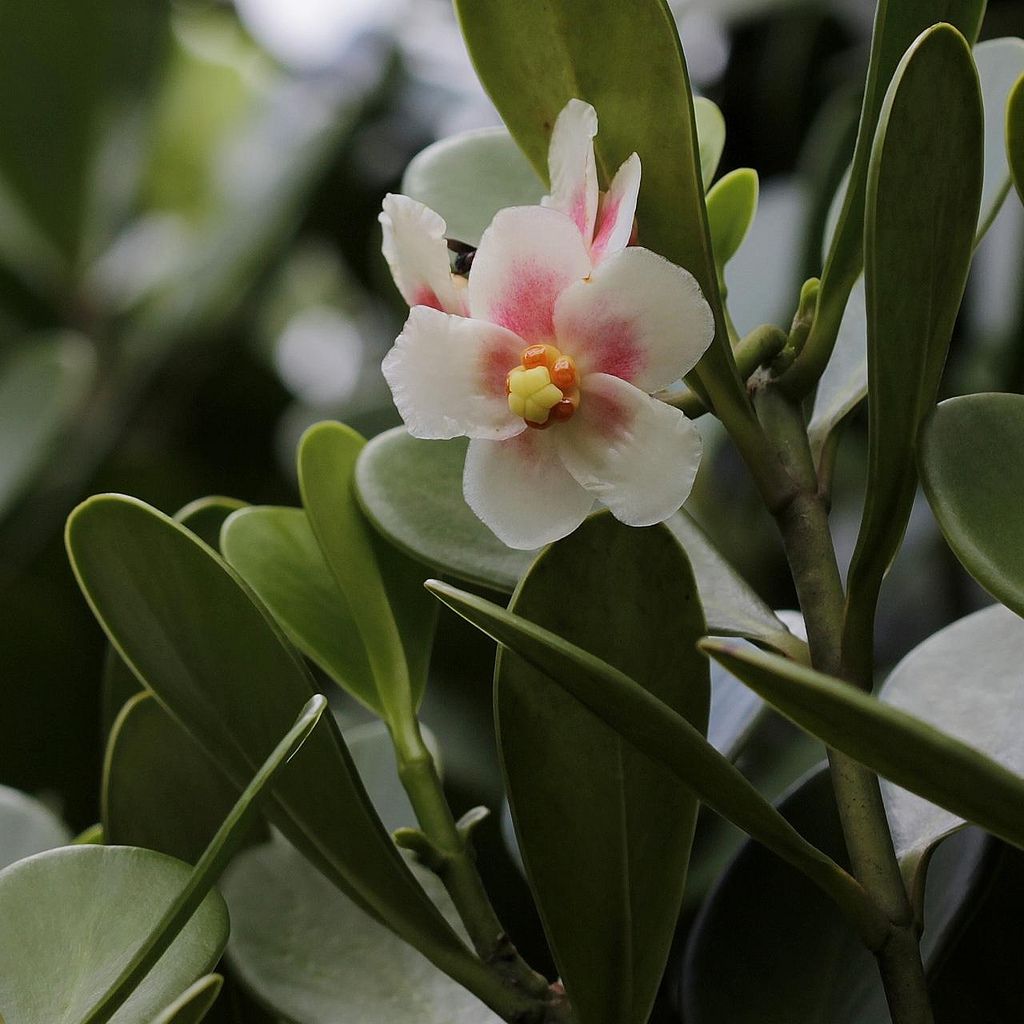Etch Your Memories: The Autograph Plant (Clusia rosea) lets you literally leave your mark on its thick, leathery leaves, creating a living, personalized piece of natural art. This comprehensive guide explores everything from the basics of Autograph Plant care to its unique properties and untapped potential, making it the ultimate resource for both beginners and seasoned plant enthusiasts. Whether you call it the Autograph Tree, Autograph Plant, or Pitch Apple, this tropical wonder is sure to add a touch of unique charm to your space.
Discovering the Autograph Tree
The Autograph Plant, known scientifically as Clusia rosea, is a fascinating tropical evergreen hailing from the tropical Americas, specifically southern Florida, the West Indies, and parts of Central and South America. It’s prized for its remarkable ability to retain etched markings on its thick, glossy, dark green leaves – hence the name “Autograph Plant.” Beyond its signature feature, this plant, which can grow into a small tree, also boasts delicate white flowers that eventually give way to fleshy, green fruit (note: these fruits are inedible and toxic). Its relatively low-maintenance nature combined with its distinctive qualities makes it a favorite among indoor gardeners.
Caring for Your Autograph Tree
Tropical Toughness Meets Indoor Charm: Clusia rosea thrives indoors with minimal care, offering a unique blend of resilience and aesthetic appeal, perfect for even beginner plant parents. Let’s explore the ideal conditions for keeping your Autograph Plant flourishing:
Light and Placement
Clusia rosea prefers bright, indirect light indoors, mimicking the dappled sunlight of its native tropical forests. A sheer curtain can diffuse harsh direct sunlight, creating the perfect balance. If growing outdoors in a suitable climate, it can tolerate full sun. [https://www.wavesold.com/asymmetrical-wall-window-for-bedroom] designs can provide ideal lighting conditions if placed strategically.
Watering
Allow the top inch or two of soil to dry out between waterings, preventing root rot, a common issue with overwatering. Mature plants tolerate slightly drier conditions.
Soil and Humidity
A well-draining potting mix, such as an orchid mix, is ideal, as it replicates the airy conditions Clusia rosea experiences as an epiphyte in its natural habitat. High humidity is preferred, so mist frequently or use a pebble tray.
Temperature
Maintain warm, consistent temperatures between 70-75°F (21-24°C), avoiding temperatures below 55°F (13°C) or exposure to frost.
Fertilizing
Feed your Autograph Plant with a balanced liquid fertilizer every two weeks during the growing season (spring and summer) or use a granular organic fertilizer three times a year.
Pruning and Propagation
Propagation Powerhouse: Easily multiply your Clusia rosea collection through stem cuttings, sharing the unique beauty of this plant with friends and family. Simply snip a healthy stem, let the cut end callous over, and place it in water or moist soil. Pruning is primarily for maintaining shape and size.
Pests and Problems
While generally resilient, Clusia rosea may encounter common houseplant pests like scale, mealybugs, aphids, and spider mites. Regular monitoring and treatment with insecticidal soap, if needed, will keep these pests at bay. Be sure to check for [https://www.wavesold.com/baby-bed-bug] and other pests that might affect nearby furniture or bedding.
Toxicity: A Word of Caution
The fruit and other parts of Clusia rosea are toxic if ingested, so keep it away from children and pets.
Beyond the Basics: Unlocking the Secrets
Clusia Rosea vs. Clusia Guttifera
While both species allow for “autographing,” Clusia rosea grows larger, making it a striking floor plant, while Clusia guttifera remains smaller, ideal for tabletops.
Creative Uses of the Autograph Feature
Explore the creative potential! Personalized plant labels, botanical artwork, or even a living guestbook are just a few ideas.
Long-Term Care
Larger plants require regular pruning to maintain a manageable size and aesthetically pleasing shape.
Scientific Insights
Clusia rosea‘s ability to retain markings may be linked to its thick, waxy leaf cuticle. Its unique CAM photosynthesis allows it to absorb CO2 at night, raising questions about its potential for sustainable gardening and even carbon sequestration. The plant’s invasive nature in some regions also warrants further research.
Growth Habits
Autograph plants are generally slow-growing, adding a few new leaves and perhaps a foot of growth annually outdoors under optimal conditions. Indoor growth tends to be even slower. Factors like light (bright, indirect), well-draining soil, and warm temperatures influence growth rate. Overwatering can lead to root rot. Pruning encourages a bushier form.
Why “Autograph Plant”?
The name comes from the plant’s unique characteristic: its thick, leathery leaves retain visible marks when scratched, much like an inscription or signature. This interactive element adds to the plant’s appeal.
Conclusion
More Than Just a Signature: This air-purifying plant also contributes to a healthier indoor environment while adding a touch of the tropics to your home. The Autograph Plant (Clusia rosea) offers a unique blend of beauty, resilience, and interactive charm. With its easy care and fascinating properties, it’s a rewarding addition to any plant collection. It’s a plant that sparks curiosity and invites us to connect with the natural world in a truly unique way.
- Contemporary Kitchen Backsplash Ideas for a Stylish Home - December 20, 2025
- Modern Kitchen Backsplash Ideas To Inspire Your Refresh - December 19, 2025
- Modern Backsplash Ideas: A Guide to Todays Kitchen Trends - December 18, 2025










